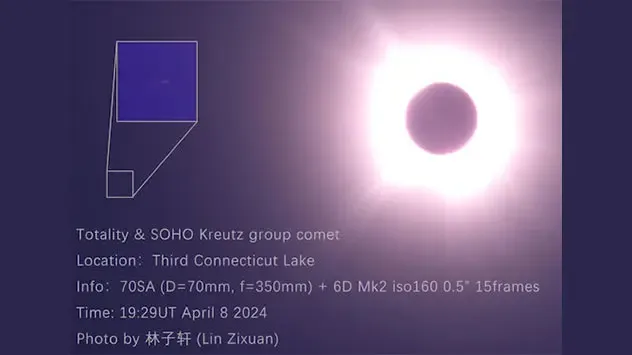The comet discovered during the eclipse
The comet discovered during the eclipse

Souce
Some amateur astronomers have captured a new comet but it will not last long because it was going straight towards the Sun, it will surely already be disintegrated, but it has an amazing story behind it, it is one of the most impressive cosmic stories of our solar system.

Souce
In the winter of 372 to 371 BC a Giant Comet approached the sun and I am not exaggerating about the Giant Comet, the Greek wise men Aristotle and Ephorus spoke about it in their writings, they said that it was an extremely bright entity, with a long tail of reddish color and that when approaching the sun it broke in two, in fact it must have broken into more pieces, because it is believed that the breakup of this Comet was the origin of all the Kreutz skimmers.

Many amateur astronomers have also been successful in discovering Kreutz comets from the data available in real time via the Internet. In addition to small comets that are around a few hundred meters, or 1 or 2 km, there are also huge fragments many kilometers in size. diameter, For example, it is believed that one of these large fragments was the one that gave rise to the Great Comet of 1843 and another also gave rise to the Great Comet of 1882.
Thank you for visiting my blog. If you like posts about #science, #planet, #politics, #rights #crypto, #traveling and discovering secrets and beauties of the #universe, feel free to Follow me as these are the topics I write about the most. Have a wonderful day and stay on this great platform :) :)
0
0
0.000
Thanks for your contribution to the STEMsocial community. Feel free to join us on discord to get to know the rest of us!
Please consider delegating to the @stemsocial account (85% of the curation rewards are returned).
You may also include @stemsocial as a beneficiary of the rewards of this post to get a stronger support.